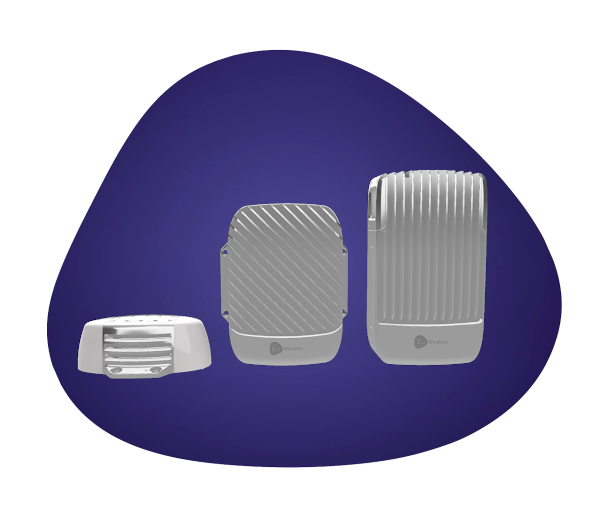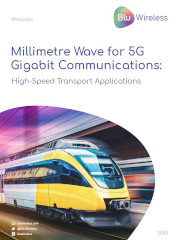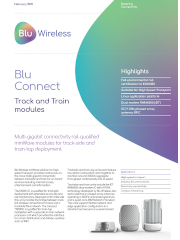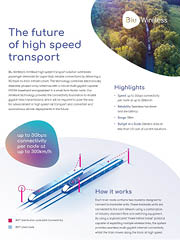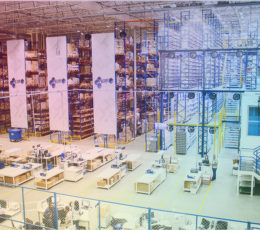Commercially proven
This software has been extensively tested in the lab and in challenging outdoor environments for both rail and V2V applications. Furthermore, it is a key component in Blu Wireless’s current track to train deployment in partnership with First Group. Rail applications in particular operate in particularly challenging environments including tunnels, curves, reflective surfaces, foliage, line of sight as well as being exposed to the elements – the MCM is vital to providing consistently well performing connections throughout a constantly changing environment.
A key takeaway from deploying with rail is that built-in software behaviours cannot be fixed, as what works for one deployment is unlikely to work for another. Even within the same rail deployment the changing landscapes mean that the behaviour of nodes may need to be adjusted for different sections of the track. The Blu Wireless Mobile Connection Manager has been built with the understanding that flexibility and requirement changes post-release are vital for a range of mobility applications and offers an innovative approach to multi-link management.




